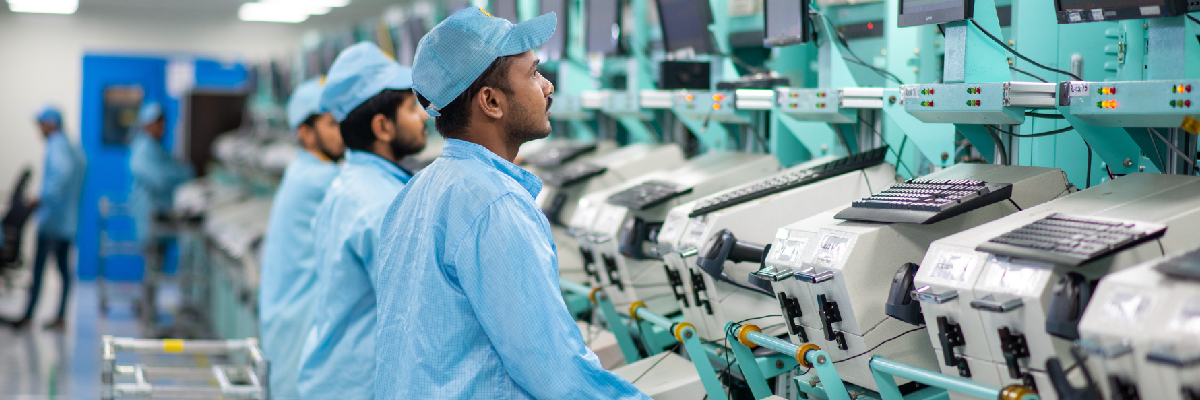India’s manufacturing sector has been undergoing a significant transformation, driven by government reforms aimed at boosting competitiveness and fostering sustainable economic growth.
At the heart of this transformation are the Production Linked Incentive (PLI) Schemes, which have emerged as important catalysts in enhancing domestic production, encouraging technological advancements and attracting foreign and local investments.
Introduced in phases beginning 2020, the PLI Schemes were designed to bolster the domestic manufacturing sector, spur technological advancements and attract investments.
Today, with an overall incentive outlay of ₹1.97 lakh crore, the PLI Schemes cover 14 critical sectors ranging from electronics and pharmaceuticals to drones and specialty steel. These incentives aim to enhance production capacity, create employment opportunities, promote exports and reduce import dependency while driving India toward its Viksit Bharat 2047 vision on a framework of Atmanirbhar Bharat.
As of June 2024, the PLI Schemes have attracted investments amounting to ₹1.32 lakh crore and a significant boost in manufacturing output of ₹10.9 lakh crore as of June 2024. Additionally, these schemes have directly and indirectly created 8.5 lakh jobs, furthering the socio-economic impact.
In exports, the schemes have contributed an impressive ₹4 lakh crore, showcasing the integral role in making India a formidable player on the global stage.
Several sectors have emerged as shining examples of how the PLI Schemes have revolutionized Indian manufacturing:
- Largescale electronics manufacturing (LSEM) has witnessed stellar growth. India has transitioned from being an importer of mobile phones to a net exporter. In 2014-15, 5.8 crore units were produced in the country, while 21 crore units were imported. In 2023-24, 33 crore units were produced in India and only 0.3 crore units were imported and close to five crore units were exported. Foreign Direct Investment has increased by ~254% since the inception of the PLI scheme for LSEM.
- Pharmaceuticals, medical devices and bulk drugs have also reaped immense benefits. India is the now third largest player in drugs and pharmaceuticals by volume with exports accounting for 50% of the production. Due to the PLI Scheme, there has been a significant reduction in imports of raw materials in the pharma sector. Unique intermediate materials and bulk drugs are now being manufactured in India, including Penicillin G. Notably, global medical device companies have transferred critical technology for sophisticated products, such as CT scanners and MRI machines, to India allowing the nation to locally manufacture 39 types of medical devices.
- Telecom and networking products have seen substantial growth in self-reliance, with a 60% import substitution. Global technology giants have now set up manufacturing units in India, turning the country into an exporter of 4G and 5G telecom equipment.
- Drones and drone components have emerged as a huge success, experiencing a seven-fold increase in turnover. This sector, predominantly powered by MSMEs and start-ups, has seen exponential growth in investment and job creation.
As India celebrates the tenth anniversary of Make in India, the remarkable success stories fostered by the PLI Schemes underscore the transformative impact of targeted industrial policies. The schemes are transforming India’s exports basket from traditional commodities to high value-added products. This focus on reducing imports, promoting exports and driving domestic manufacturing has not only reshaped industries, but is also significantly contributing to India’s aspiration of becoming a global manufacturing powerhouse.


